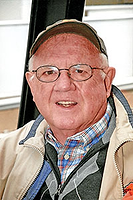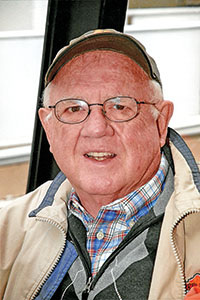When dealing with laminitis, most cases require a team approach between the horse owner, farrier and veterinarian. And if there is no respect or communication between you and any of the other parties, Amy Rucker maintains, you should decline to work on the horse.
The equine veterinarian from Rolla, Mo., told attendees at last winter’s Bluegrass Laminitis Conference that you should never be willing to use a treatment technique that you believe will be detrimental to the horse. “Simply decline to work on the horse,” she says. “This may seem obvious, but if someone wants to shoe a sinker with a reverse wedge pad and you don’t agree, then say no.”
She says “sneaky situations” sometimes arise, such as suggesting a “gentle trimming” on a horse that is a sinker.
“Should you express your beliefs and then ‘gently’ trim the horse, putting your name or endorsement on the work?” she asks. “Or should you state that you believe that just trimming the horse is not enough to save its life and that if they want the horse ‘gently trimmed,’ they’ll have to find another professional that believes in that method and have them trim the horse?”
Different Approaches
Rucker admits that everyone does things differently and that you can’t be so rigid to only work with someone who does things exactly as you want them done. Yet she maintains that the result can be ineffective when a vet and farrier try to blend their techniques together.
“The trick to communication and working together is to focus on the mechanics,” she says. “You can’t cheat physics when working on a laminitic horse.”
8 Her first step with a laminitic horse is to determine the ideal palmar angle and digital breakover. She and the farrier will discuss whether the horse will require putty in the sole, decide how much the shoe can weigh, whether the horse can stand the stress of nailing or if a glue-on shoe is a better bet and agree on how long the horse can stand while the shoe is applied.
8 The farrier and vet should brainstorm different shoe options together. Determine if there is an ideal product sitting in your shoeing rig that will work on this horse or whether you need to create something special from keg shoes, glue, bar stock, rivets, wood, duct tape, baling twine or whatever.
“Evaluate the X-rays and draw out your shoeing idea on paper,” says Rucker. “If it won’t fly on paper, it won’t work on the horse.”
8 If you find that your 2-hour, $135 product creation is placed on the foot and it doesn’t meet the needed mechanical goals, pull it off and start over.
Communication Is Critical
Rucker says it is important in these cases to communicate directly with the client and not through friends, trainers or barn managers. “Many times there is a lack of understanding on the owner’s part as to the severity of the laminitic case,” she says.
“If you accept a case, then you also take the responsibility of communicating with that client. And be sure to spell out both the short- and long-term goals.”









Post a comment
Report Abusive Comment